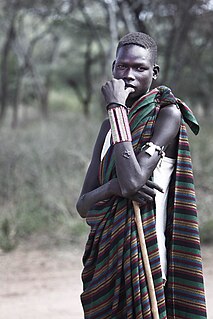The Oropom were the aboriginal inhabitants of much of Karamoja in Uganda, Mt. Elgon area and West Pokot, Trans Nzoia and Turkana regions in Kenya. Their descendants were largely assimilated into various communities present in their former territories, including the Iteso, Karamojong, Pokot, Turkana and Bukusu. They are or were found in scattered pockets between the Turkwel River, Chemorongit Mountains and Mt. Elgon. One report indicates that they formerly spoke the unclassified Oropom language.
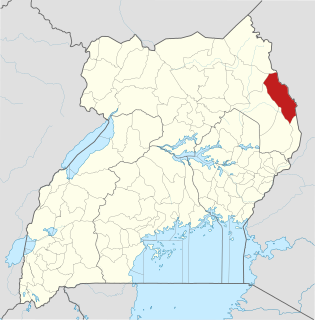
Moroto District is a district in the Northern Region of Uganda. The town of Moroto is the site of the district headquarters.
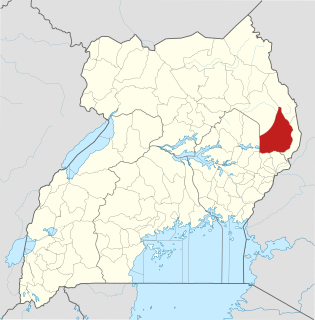
Nakapiripirit District is a district in Northern Uganda. Like many other Ugandan districts, it is named after its 'chief town', Nakapiripirit, where the district headquarters are located.
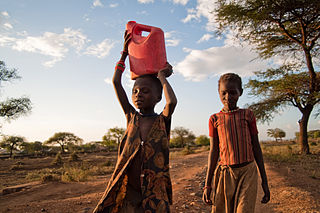
The Karamojong or Karimojong are an ethnic group of agro-pastoral herders living mainly in the north-east of Uganda. Their language is also known as Karamojong or Karimojong, and is part of the Nilo-Saharan language group.
The Teso are an ethnic group in eastern Uganda and western Kenya. Teso refers to the traditional homeland of the Iteso, and Ateso is their language.
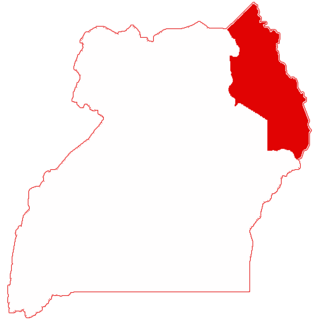
Karamoja sub-region, commonly known as Karamoja, is a region in Uganda.

Amuria is a town in the Eastern Region of Uganda. It is the chief municipal, administrative, and commercial center of Amuria District, in the Teso sub-region.
Nadiket Seminary, aka St. Mary's Seminary, Nadiket, located about 3 km (1.9 mi) on the Moroto-Kitale road Uganda, is a Catholic institution where young men are trained to the priesthood.
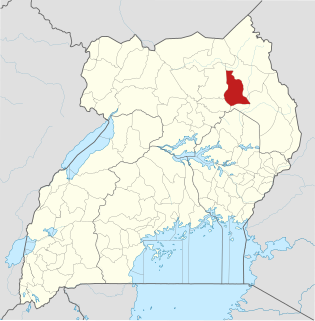
Abim District is a district in Northern Uganda. It's named after its 'chief town', Abim, where the district headquarters are located.
The Karamojong language is a Nilo-Saharan language spoken mainly in the Karamoja subregion of north-eastern Uganda.
Moroto Regional Referral Hospital, commonly known as Moroto Hospital is a hospital in the town of Moroto, in Northeastern Uganda. It is the referral hospital for the districts of Abim, Kaabong, Kotido, Moroto and Nakapiripirit and Napak.

Napak District is a district in Northern Uganda. It is named after Mount Napak, and its headquarters is at Lokitede.
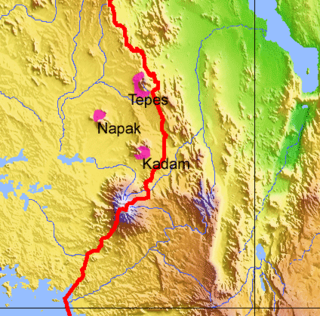
Soo or So is the Kuliak language of the Tepes people of northeastern Uganda. The language is moribund, with most of the population of 5,000 having shifted to Karamojong, and only a few dozen elderly individuals are still able to speak Soo. Soo is divided into three major dialects: Tepes, Kadam (Katam), and Napak.
Nyang'i (Nyangia) is the nearly extinct Kuliak language of the Nyangea hunter-gatherers of northeastern Uganda. The 15,000 Nyangia have shifted to speaking Karamojong.
The Jie are an ethnic group of Uganda. They belong to the Karamojong Cluster, which also includes the Karamojong and Dodoth people. Their country in northeast Uganda lies between the Dodoth to the north and the Karamojong to the south.
The Dodoth are an ethnic group in north eastern Uganda. They belong to the Karamojong Cluster, which also includes the Karamojong and Jie people. Their language is a dialect of the Karamojong language.

Loyoro is a community in Eastern Equatoria state of South Sudan, about 50 kilometres (31 mi) as the crow flies to the north east of Narus. It lies on the Loyoro River. Loyoro is part of the Narus parish of the Catholic Diocese of Torit.
Soroti–Amuria–Abim–Kotido Road is a road in the Eastern and Northern Regions of Uganda. The road connects the towns of Soroti in Soroti District, to Amuria in Amuria District, Abim in Abim District, and Kotido, in Kotido District. Soroti and Amuria lie in the Teso sub-region, while Abim and Kotido are in the Karamoja sub-region.


